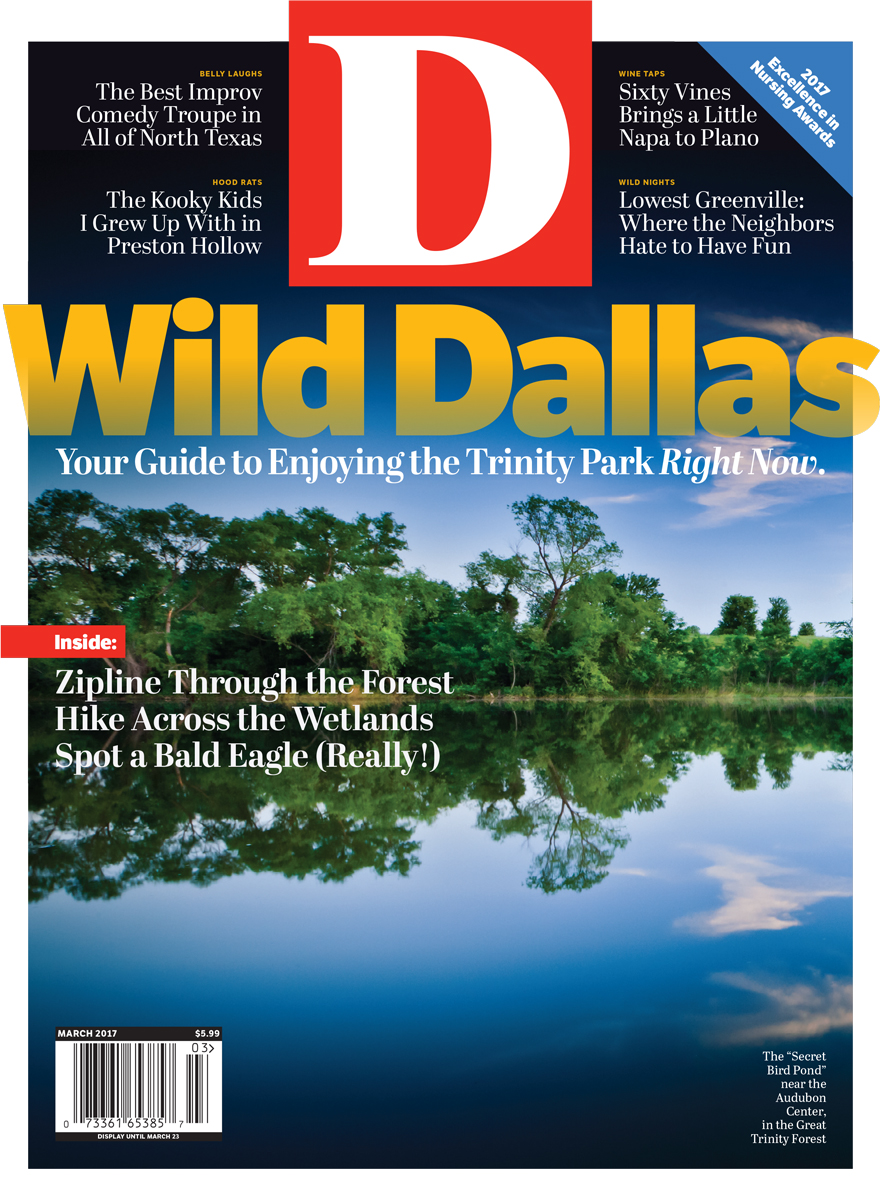From March 2017

But beneath the surface, it represents the same old status quo thinking about the Trinity River. Here’s why.
The Status Quo Trinity River Vision
For more on how the latest plans for the Trinity River grew out of more than a century of failed efforts by Dallas establishment to transform the river into something it isn’t, read this article in the March Trinity River package.
- Created by “world class designers.”
- Requires lots of expensive construction in the floodway.
- Needs at least $250 million in private donations to be built. Total build, operation, and maintenance costs are still unclear.
- Has not been studied by engineers, and questions about hydrology and engineering challenge its feasibility and true cost.
- Calls for management handed over to a yet-to-be-determined private entity controlled by same civic leaders who have failed to protect the Trinity for decades with an unknown amount of public input and oversight.
- The leaders backing the plan have squandered the public trust and whose limited successes in building the Trinity River Project have been tainted by mismanagement (e.g. white water course, Trinity Forest pits, near destruction of Big Spring).
- Hundreds of millions of dollars will only transform a relatively tiny section of the floodway while the vast majority of the huge expanse of the floodway near downtown will remain as it is today and the rest of the watershed is left without any guiding principal or plan.
- Still includes a plan to build a toll road/parkway that has no demonstrated benefit to traffic congestion and is being justified by mid-20th century ideas about stimulating economic development in the southern sector.
The Wild Dallas Vision
For more on Kevin Sloan’s Wild Dallas vision go here, and to learn about Angela Hunt’s plan for getting started today, go here.
- Based on the Balanced Vision Plan which was created by “world class designers,” but is also steered by the vision of people who understand and appreciate the Trinity River’s particular ecology.
- No major construction. Mostly calls for creating access, ways to expand appreciation, and reintroducing native plant species.
- We could have started two years ago with the $47 million that is already set aside in the 1998 bond package.
- Fully vetted by the federal government and will be able to built in stages. An iterative planning process with the core will finalize hydrology and flood control concerns as they relate to the “re-wilding” of the floodway.
- Options for management including ensuring public input and placing conservation and preservation of the Trinity’s ecosystem as a core value to the project.
- Includes input from experts who have worked on previous plans for the river, who have acted as citizen watchdogs for the river, and who have tried to fight efforts to ruin the river with roads and misguided amenities.
- Is not a design to be built, but a conceptual and management strategy that will impact and revitalize the entirety of the Trinity River floodway and watershed.
- Creates park access without the saddling of the project with the cost or negative impact of the road. Will create new economic development opportunities throughout Dallas, including the southern sector, by incentivizing new investment along the edges of the protected Trinity River floodway and forest. Removes uncertainty surrounding the road project that has stymied economic development near the Trinity downtown for decades.
Get the D Brief Newsletter
Dallas’ most important news stories of the week, delivered to your inbox each Sunday.





